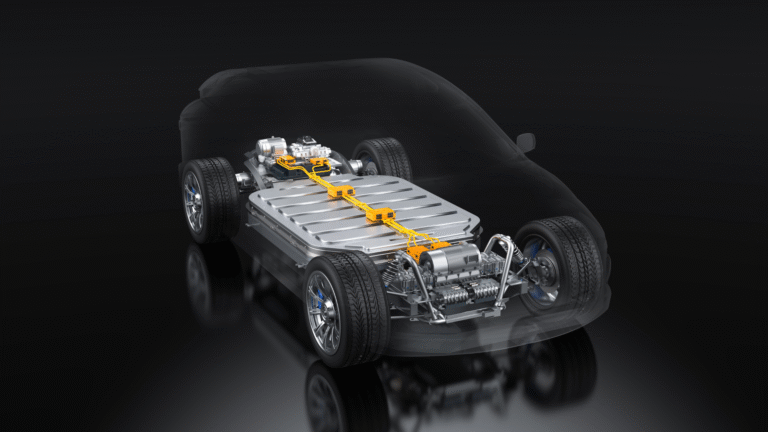As electric vehicles (EVs) rapidly become the new norm across Australia, there’s one breakthrough that could transform the industry overnight: solid-state batteries. Touted as the future of EV energy storage, these advanced batteries promise faster charging, longer range, and improved safety.
But what exactly are solid-state batteries, and when will Australian drivers start seeing them in showrooms? Let’s explore why they’re being hailed as the next big leap in EV technology.
—
Table of Contents
- What Are Solid-State Batteries?
- Solid-State vs. Lithium-Ion: What’s the Difference?
- Benefits of Solid-State Batteries for EVs
- Challenges and When to Expect Them in Australia
- Which Automakers Are Leading the Way?
- FAQs
- Conclusion
—
1. What Are Solid-State Batteries?
Solid-state batteries use a solid electrolyte instead of the liquid or gel electrolytes found in conventional lithium-ion batteries. This small but critical change leads to a number of improvements in performance, safety, and energy density.
Key characteristics:
- Solid electrolyte (typically ceramic, glass, or sulfide-based)
- Lithium-metal anode (rather than graphite)
- Compact structure that enhances stability and efficiency
In essence, they pack more energy into a smaller, lighter, and safer unit—exactly what the EV industry needs to push boundaries.
—
2. Solid-State vs. Lithium-Ion: What’s the Difference?
Here’s how solid-state batteries compare to the lithium-ion batteries found in most current EVs:
| Feature | Lithium-Ion (Current) | Solid-State (Future) |
|---|---|---|
| Electrolyte | Liquid or gel | Solid ceramic/glass/sulfide |
| Energy Density | Moderate | Up to 2x higher |
| Charging Time | 30–60 minutes | As low as 10–15 minutes |
| Fire Risk | Moderate (thermal runaway) | Very low |
| Lifespan | 1,000–2,000 cycles | Up to 5,000+ cycles |
| Operating Temperature | Narrow range | Wider temperature tolerance |
| Cost (as of 2025) | Lower | High, but falling |
Solid-state tech addresses many of the current complaints about EVs—range anxiety, long charging times, and battery degradation—making it especially appealing for Australia’s vast geography and road-trip culture.
—
3. Benefits of Solid-State Batteries for EVs
🔋 Extended Driving Range
Solid-state batteries can store more energy in the same space, potentially doubling the range of today’s EVs—crucial for driving between cities like Sydney and Melbourne without stopping to charge.
⚡ Ultra-Fast Charging
Forget waiting 30–60 minutes at a fast charger. Solid-state batteries could recharge to 80% in 10–15 minutes—similar to the time it takes to fill a petrol tank.
🔥 Improved Safety
Solid electrolytes are non-flammable, reducing the risk of fire or thermal runaway—an important safety upgrade, especially in Australia’s hot climate.
🧬 Longer Lifespan
Solid-state batteries can endure more charge cycles, meaning fewer replacements and lower long-term ownership costs.
♻️ Reduced Environmental Impact
Because of their efficiency and longer life, solid-state batteries may reduce mining demand and e-waste over time.
—
4. Challenges and When to Expect Them in Australia
Despite their promise, solid-state batteries face several hurdles before mass adoption:
- 🧪 Manufacturing Complexity: The technology is still in development and difficult to produce at scale.
- 💰 High Costs: Current solid-state prototypes are significantly more expensive than lithium-ion systems.
- 🔌 Infrastructure Readiness: EV charging stations may need upgrades to support ultra-fast charging safely.
- ⏳ Limited Availability: Even globally, production is expected to begin at scale around 2027–2030.
For Australians, this means that solid-state EVs are still a few years away from hitting dealerships, but trials and premium models may appear as early as 2026–2027.
—
5. Which Automakers Are Leading the Way?
Several major automotive and tech players are investing heavily in solid-state R&D:
| Company | Solid-State Battery Plans | Status (2025) |
|---|---|---|
| Toyota | First vehicles with solid-state expected by 2027 | Pilot production underway |
| QuantumScape | Backed by VW, working on lithium-metal solid-state | Early-stage prototypes |
| Nissan | Targets mass production by 2028 | Building pilot facility |
| BMW + Solid Power | Exploring co-development for premium EVs | Testing planned for late 2025 |
| Samsung SDI | Focused on high-capacity mobile and EV batteries | R&D in progress |
Toyota, in particular, is testing solid-state cells in hybrid vehicles before rolling them out in full EVs—an approach that may influence early availability in Australia through models like the Corolla or Camry hybrids.
—
FAQs
🔋 Are solid-state batteries available in EVs in Australia now?
Not yet. They’re in testing phases, with production EVs expected globally around 2026–2028.
⚡ Will I need new charging infrastructure for solid-state EVs?
Most chargers will remain compatible, but to benefit from ultra-fast charging, some upgrades may be necessary.
💰 Will EVs with solid-state batteries cost more?
Initially, yes. Premium pricing is expected until mass production drives costs down. Early models may appear in luxury or performance vehicles.
🌱 Are solid-state batteries better for the environment?
Yes—due to better efficiency, lower fire risk, longer life, and potentially fewer raw materials required per kWh.
—
Conclusion
Solid-state batteries are more than just the next battery trend—they could redefine the EV landscape. For Australian drivers seeking longer range, faster charging, and safer vehicles, this innovation is poised to deliver massive improvements.
While commercial models may still be a few years away, keeping an eye on this emerging tech is essential—especially for early adopters, fleet managers, and those planning their next EV purchase.
🔮 Ready for the future? The next time you consider buying an EV, solid-state might just be your next big upgrade.
—
Solid-state batteries promise faster charging, longer range, and safer EVs. Learn how this tech could transform electric vehicles for Australian drivers.
